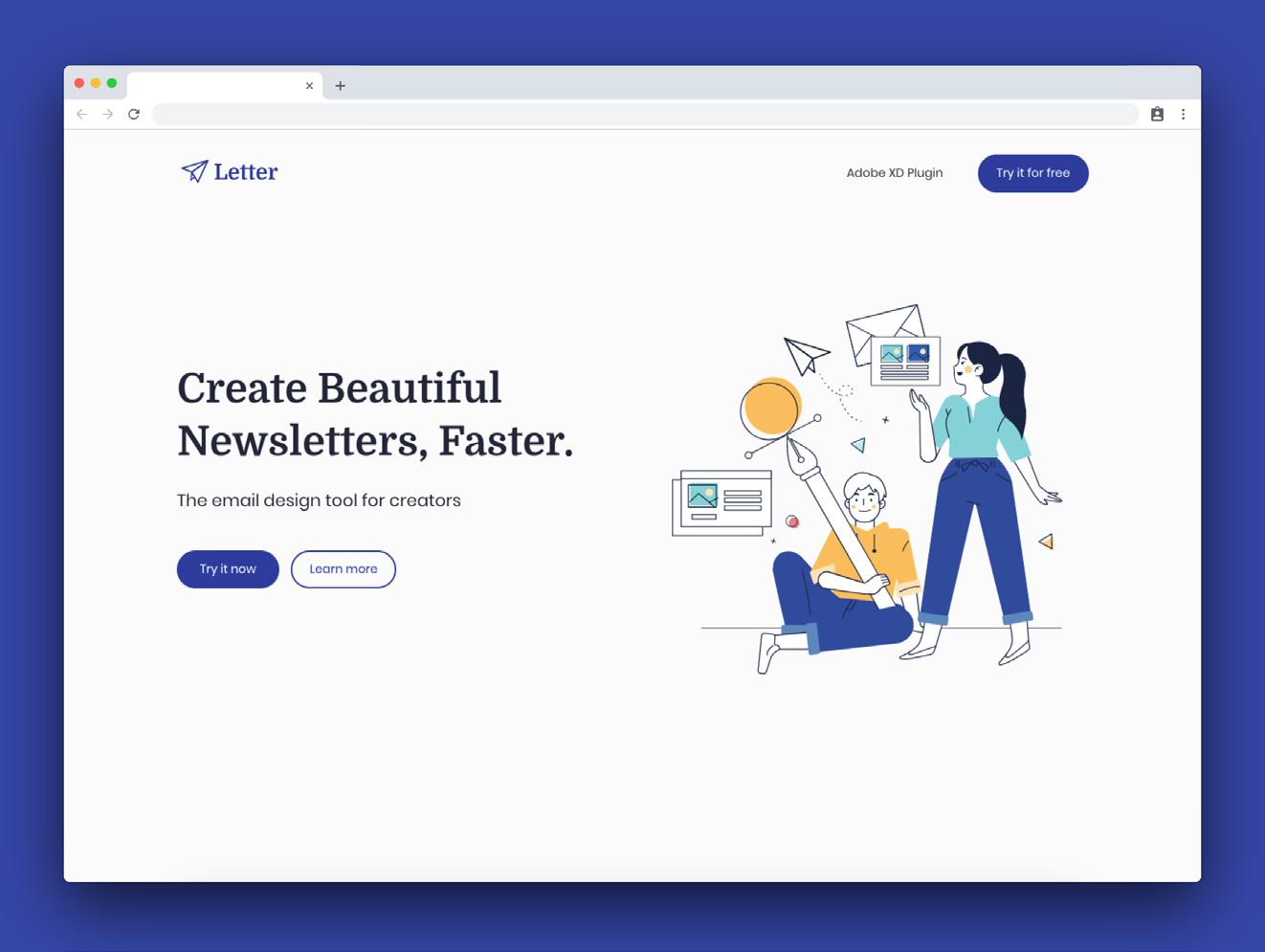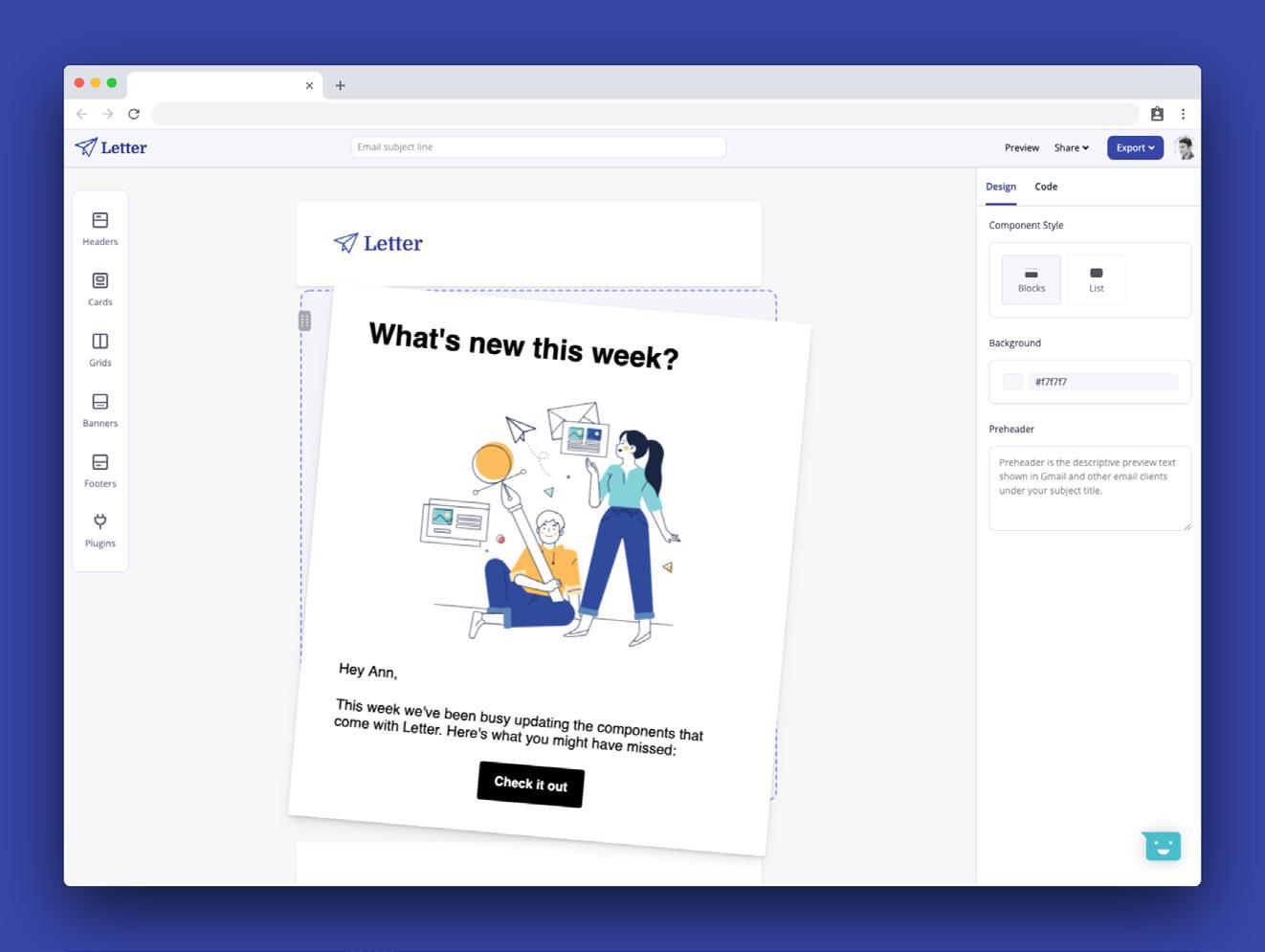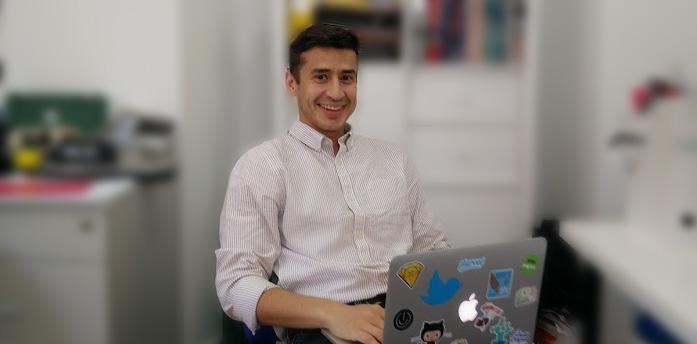
7 minute read
SPOTLIGHT
THE NOMADIC WORKER
We’re shedding a spotlight on one nomadic worker in particular, Graeme Fulton, founder of Prototypr.io, who has just launched an exciting new web app set to revolutionise the way we create newsletters. What makes his letter app different to those on the market? And what does he think Gibraltar could do more of in order to make it a more attractive hub for tech start-ups?
Advertisement
Feature by Sophie Clifton-Tucker
Director of Little English Language School (Gibraltar), Editor of The Gibraltar Magazine, Editor of Gibraltar Business
Hi, Graeme! You spent a significant amount of time working remotely here on the Rock. What brought you to Gibraltar?
I was working for Marvel, a design app with around 2 million customers, as a writer. This meant I was able to work remotely – anywhere I could take my laptop basically. I chose Gibraltar because I had lived there briefly previously, and the weather and lifestyle made it an attractive choice.
What is Prototypr and how did it all come about?
Prototypr is a design discovery platform and online publication. It’s like the App Store, but full of design apps (similar to Adobe Photoshop; apps that help people prototype and design ideas, from colour picking tools to icon and illustration libraries) and stories related to user experience design. We have articles from over 3,000 writers, ranging from UX/UI design to coding and front-end development.
It started as a side project whilst I worked at IBM Design. I just started writing about things I was learning, and publishing them on a blog under my brand name. It quickly gained traction, and I invited other writers to use my platform to share their work too. The publication now has over 150,000 subscribers, and now I’m growing other parts of the platform such as jobs board. To have started with no money or investors, to now partner with the biggest companies in my industry like Adobe is pretty cool.
When did your idea for your letter app come to you, and why?
Letter is a design tool for creating email newsletters. Part of Prototypr involves creating and sending a weekly newsletter, which used to take me around 3-4 hours with existing products on the market. Other people in the industry had the same problem and we all hated it. I hated it so much, I decided to make my own newsletter design tool to speed things up.
So, if you’re looking for a product idea, I think the best place to start is by solving your own problem. If you hate something, there’s a chance other people hate it too.


What makes it different to other newsletter builders on the market?
Newsletter design is nothing new, but how the product is executed is what makes it different. That’s the same for all markets - there’s always room for better, so competition doesn’t matter if you solve the problem better than others. The workflow of creating a newsletter is currently fragmented and very manual. With existing tools, we have to crop and resize images, copy and paste titles and links, and many other monotonous tasks. It all adds up, taking a lot of time, and increases room for human error. How often do you get an email with a broken link?
Letter handles all those mundane tasks, so saves you hours. It’s designed so that humans can focus on the creative parts, and automates repetitive work. Email design is an old industry that has fallen behind the standards we expect when using a product, and even the most popular email design tools are clunky and hard to use. In contrast, Letter is actually intuitive and easy to use, which progresses the industry.
Did you raise any money for this project? How have you funded development so far?
I’m a big believer in self-funding (or ‘bootstrapping’) a product. If you solve a real problem that other people struggle with too, why would you need an investor?
A lot of the time, we read of companies who celebrate raising millions of dollars to fund their idea. If the product is not what customers want though, this just prolongs the failure. At the end of the day, the customers decide if a product is needed, not investors.
If you want to go the investor route, make sure you’ve at least made a few sales first. You’re giving away control of your business in return for faster growth. That means when important decisions come, you might not have the final say.
That being said, once Adobe caught wind of what I was up to, they offered me an Adobe Fund for Design grant in order to create a plugin for Letter so that it would integrate with Adobe XD. Once you create something that plugs a gap in your respective market, it’s entirely possible that investors will come to you. If your product makes lives easier, and you believe in it, so will others.
What do you reckon Gibraltar could do more of, or offer, to make it more attractive to tech start-ups?
I would already have set up my company in Gibraltar, but whilst I was renting, the landlords wouldn’t let me use the address for residency

purposes. They wanted to keep the benefits of a Gibraltarian address whilst living in Spain. I should probably have checked first, but that type of corruption would be good to fix.
Additionally, affordable coworking spaces would be good. Although I did look at one local coworking space, it would have ended up costing me just as much monthly to rent my own permanent office elsewhere. For someone like me, it made no sense, so I ended up working out of cafes with shoddy internet connections. There needs to be more of a remote work culture in general; not everyone needs to be in the office from 9-5. A big, free working space open to the public with reliable WiFi and basic amenities would attract remote workers, and subsequently boost the economy and workflow.
Can you give us your top 5 tips for seeing a project like yours through from inception to fruition?
Solve your own problem. If you want to start something, it’s not an idea that you need to come up with; it’s a painful problem that needs to be solved. If it’s your own problem, in an industry that you’re passionate about, there’s more chance of seeing it through. Start small and be consistent - I started with a sketch and an interactive prototype that took 20 minutes. I kept adding to it and sharing the progress to validate the idea.
Share what you’re making. Don’t keep it a secret, nobody will steal your idea, and nobody can execute it how you would. Everything already exists, it’s the execution that makes it different.
Listen to the right people. If you want to start a business, don’t just get advice from people who work regular day jobs. Don’t listen to your parents either.
Make sure you make time for people. It’s easy to get tied up in work and deadlines, but chances are, nobody will remember you or your business when you’re dead. 1. 2. 3. 4. 5.

Early access of Letter is now being rolled out. Visit letter.so to try it out.


We will find a business loan to meet your aspirations and means Let us help you make your dreams a reality
If interested please phone us on 20013900











